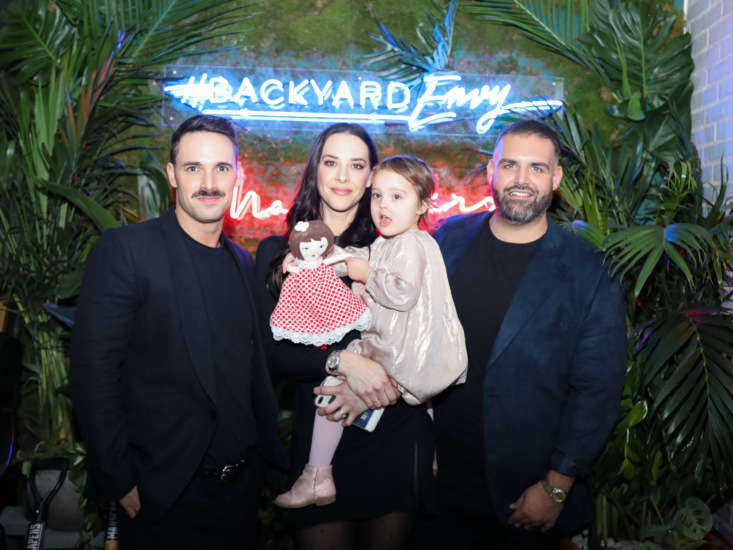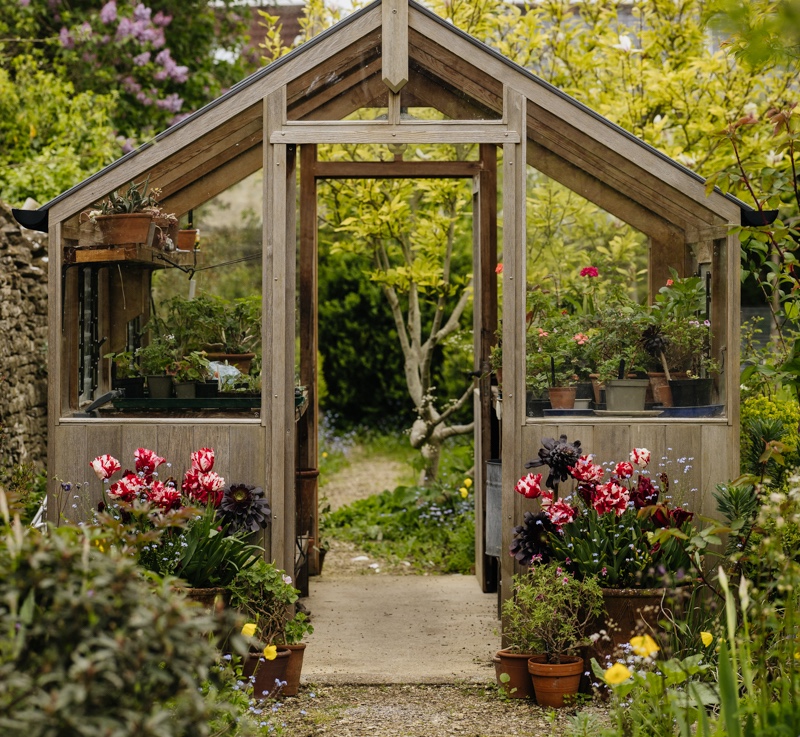The first thing you think when you hear the word “Manscapers” may not be a high-end, New York City landscaping company with its own TV show, but best friends Mel Brasier, Garrett Magee, and James DeSantis are working to change that, they tell us. The trio have been friends for more than a decade, in business together for the last six years, and recently landed the series Backyard Envy, which airs on Bravo. The premise of the show, and their business, is beautifying backyards (and courtyards, Juliet balconies, roof gardens, you name it) all over New York with their signature brand of lush yet livable planting schemes.
We took a look through their portfolio and had to wonder: How did they get it so green? Despite the less-than-perfect growing conditions in most city gardens, the firm has managed to find ways to add color and texture to their designs. Here, some of their best city gardening advice:
Photography courtesy of Manscapers.
1. Consider a container garden.

If you’re a renter and moved into an apartment with a garden, Manscapers suggests planting a container garden to make the most of your outdoor space without sinking a lot of money into the garden (in case you move again in a year). Plus: you can take it with you when you move. “Try inexpensive terra cotta pots (which age beautifully), and choose a variety of sizes for variance of height and depth,” the designers suggest. “We use pots in most of our spaces (whether there are in-ground planting options available or not) as accents for color, texture, height, and sometimes a little drama. Pots can be shifted around if your furniture layout changes or you are looking to revamp the space.”
What to plant in your container garden? Manscapers suggests slow-growing plants like Epiphyllum cacti, hoya succulents, and boxwood shrubs, which all easily adapt to different environments.
2. Compost is key.
City gardens often come with poor soil quality, so Manscapers suggests using homemade compost to help boost your soil’s health. You can look for visible signs of poor soil quality like weed infestations, poor drainage, and predatory insects, or buy an at-home soil testing kit to find out for sure, but adding compost to the soil will be beneficial regardless.
If you want to make your own compost, get tips from our recent post Hardscaping 101: Composting.
3. Embrace shade-lovers.

Most city backyards are surrounded by buildings or trees, so learning to love a shade garden is key to making the most of your outdoor space. (What exactly is a shade garden? Find out in The Garden Decoder: What Is a ‘Shade Garden’?) “Not everyone can have a wide open south-facing garden; in fact, most of our clients don’t, so the Manscapers have become very well-versed in shade gardens. We love using ferns, hostas, and laurels.”
If you are lucky enough to have a sunny space (such as a roof garden, for example), the designers like to incorporate tall grasses. “Grasses provide a layer of privacy and a feeling of being outside the city.”
4. Layer.

“Working most in the city, many of our clients are surrounded by concrete so we like to start with a base layer of green. Our usual go-to is boxwood, for a hearty plant that provides greenery year-round. From there, we will layer in color. One of our favorite perennials is Liatris ‘Gayfeather,’ a beautiful purple flower that gives a lot of character to any garden.”
5. Logistics, logistics, logistics.

The most challenging part of any city garden project? The logistics, says Manscapers. “We build gardens in very unexpected places (56 stories high, on rooftops with no freight access, in the back of a truck, etc.) and the one thing we always have to pay the most attention to is the logistics of these sometimes complicated locations in the city.
“Elevator access, sizes of doorway openings, and rooftop weight limits are all things that will inform your design and are very unique to living in the city. Sometimes you’ll need to make compromises—or else rent a crane!”
And, a bonus tip: Have fun.
“Add green where it’s least expected—clear out a corner of a bookshelf and pop a potted plant in, or put one in your bathroom window. Hang plants on the walls. (Staghorn ferns are great for this.) Fill your bedroom with plants—it makes you sleep better and adds life to the room. Add an herb garden in your kitchen window.”

More urban garden advice:
- 10 Things Nobody Tells You About Fire Escape Gardens
- Perfect Parisian Balcony Gardens: 7 Favorites from the Gardenista Archives
- The Cult of the Courtyard: 10 Backyard Ideas for Small Spaces












Have a Question or Comment About This Post?
Join the conversation (1)